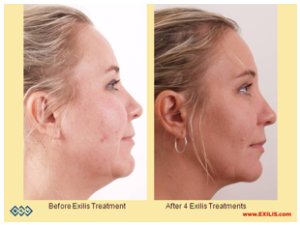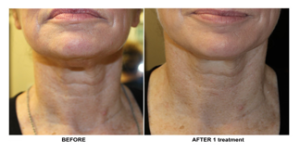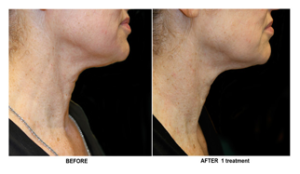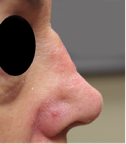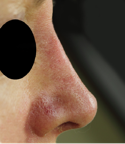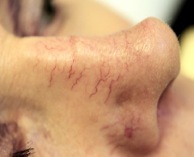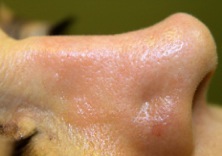We all would like to be young and look young. We eagerly seek new options, miracles and fountains of youth believing that the newest and, how often, the most expensive is that elusive IT. Women, more than men, have a wonderful need to look beautiful, desirable and attractive with the least signs of passing time. This healthy desire is not new; it has been present for as long as human history records are kept , with notable exception of the Middle ages.
With development of mass communication and media, the internal drive for self-beauty is becoming less spontaneous and more “designed” and “ready to use” by duplicating prevailing trends. Many has lost the perception of beauty in classical understanding and simply follow the trend-setters’ vision of marketable beauty.
So, is there a definition of beauty anymore?
There are many definitions of beauty because the perception of it seems to be so subjective. In general understanding, the beauty is that which brings about immediate and self-sustained admiration. This admiration was for centuries a result of spontaneous and instant impression induced by particular set of lines, curves, surfaces and shapes. But more recently, a new and powerful factor begun to play a role in our perception of beauty: the conformity with our expectations and desires coming from our acquired taste.
The issue of human beauty, however, is much deeper; it touches upon the qualities of our character and our soul. Even before the Greek Golden Age, beauty was always associated with important qualities such as moderation, honesty and certain conventions, all complementing each other. Greek philosophers defined this for us as : “Harmony is the most beautiful thing”.
Since conformity implies the set of rules is there a prescribed standard of beauty?
Immanuel Kant defined “beautiful” as ”…that which, apart from a concept, pleases universally.” The extent of that vision was only fully realized recently with the ability of contemporary media to beauty universal. The explosion of mass media was the trigger for culture-dependent phenomenon of manufactured standard of beauty with its universality originating from the Western model.
Human beauty in recent history
The last century technological revolution and advances in communication totally modified not only our perception of beauty but also the extent of its definition.
Take the example of nudity before the invention of photography and cinema. The nudity and looking at it was a strictly personal and intimate matter. For centuries, the only nudes seen in public were in the works of painters and sculptors.
In the XXth century the visual representation of nudity became progressively more acceptable, easily accessible and eventually became a part of everyday life. Not coincidentally, it came along the process of emancipation of women beginning with a new taste of Art Nouveau and culminating in the Second Wave of feminism and final women’s liberation in 1960’s.
Once the human body gained universal acceptance by exposure to contemplation and admiration, its representation was progressively applied to our daily habits and practice in many forms of new lifestyles such as diets, outdoor sports, personal beautification and, near the end of the 20th century, new plastic surgery. These new forms became the most convincing tools in achieving our aesthetic objectives and desires.
Plastic Surgery
Plastic Surgery became a logical step in pursue of personal beautification and physical individuality. If one lived in remote seclusion there would never be a need for plastic surgery. In reality, however, we pay great deal of attention to our reflection in a mirror as well as, or even more, in the scrutiny of others. The absence of these two key elements would eliminate a pursuit of any representation of self-image. Their presence in reality have determined rapid evolution of self-adjustments, in particular that of plastic surgery.
By far, the largest mirror in contemporary society is held by and directed by media which amplifies new standards and new criteria which are defined by the avant-garde environment of entertainment and fashion industry.
The modern plastic surgery owes its explosion to the dissemination by the media of these new standards of representation of the body. Plastic Surgery has become a powerful promoter of individuality which our society has embraced in the last few decades through new type of self–care and a strong will to improve oneself both spiritually and physically.
We are living in the era of “personal development” where the Aesthetic Medicine, and particularly Plastic Surgery, keep high position along with personal coaching and many other “well-being” strategies.
Is a harmonious, effective social life and sexuality possible outside of beauty?
How fortunate we are that the world does not revolve around beauty alone! How many of us know that the long term personal happiness appears to be inversely proportional to the “attractiveness” of the subject?
The most dramatic and revealing sociological study compared many aspects of personal happiness of people recognized by the society as “beautiful” such as models, beauty pageant winners or media celebrities to those whose appearance was considered average. The result were truly shocking, but not unexpected, and showed that the rates of depression, divorce, suicide, childlessness, and end-of-life loneliness are much higher for the “beautiful” than for the “average” looking people.
Excessive beauty, quite often, becomes a burden for the human being. Yes, the presence of beauty opens doors initially but the price to be paid subsequently seems unusually high.
But there is another, universally negative factor that is too often attached to a “beautiful” person who has succeeded either professionally or personally. There will always be a sort of aura of non-credibility and non-recognition of their true worth and therefore, of their work and accomplishments. In fact, beauty effectively masks the objective reading of one’s worth.
Greek philosophers always suggested moderation in all aspects of life in order to achieve perfect harmony. In view of the study cited above this idea has proven itself throughout the ages.
Are women increasingly becoming victims of physical complexes that they did not have 50 years ago?
The social pressure on women seems to reflect the power of media in creation of new standards.
Our society seems to glorify youthfulness as never before; this new standard forced itself upon us through media, contemporary music and cinematography. Over the last few years it even became a model for competitiveness on the job market.
Not to conclude the absolute we must admit some objectivity. Looking from a different angle on the evolution of aesthetics , the new trends are a reflection of the process we slowly begun to accept and incorporate into our new concept of self-care. The process has its strong roots in natural and deep human need for “normality”, for harmony, for moderation. But this universal standard of “normality” has been extended in recent decades and once it has been achieved there is a desire to project the idea into individual originalityand, perhaps more often than not, into ambition of reaching a degree of uniqueness.
This trend is reflected clearly in patient approach to aesthetic changes. The initial requests frequently originate from aspiration for “normality”: not to have large breasts or too many wrinkles, to correct protruding ears, wide ankles or uneven bite. And once this has been accomplished, any further requests could bring aesthetic “alterations” from one level to another with more subtle and more refined changes aimed for perceived excellence such as brightening of teeth, modifying expressions, reshaping of buttocks or hips, improving contour of nose, or rejuvenation of ears or toes.
These two steps, from normality to originality, in order to be optimal and aesthetically pleasing, must be integrated with thorough understanding of the individuality and objective technical possibilities of Aesthetic Medicine in 21st century.
How to assess which wrinkles or curve is beautiful or not, important or immaterial in aesthetic sense?
This is very important question, a question that many patients expect to be answered during the initial consultation. The answer to this seemingly easy question depends not only on the technical possibilities but in essence on doctor’s artistic abilities and understanding of visual perception, light interplay anddynamics of the perceived abnormality.
It may come as a great surprise to many that the educational process in any medical specialty or post-graduate aesthetic training does not include even the most basic review of the aesthetic ideals, the concept of “Beauty”, “Beauty” in the context of Art, the philosophy of “Beauty”, etc.
None of medical residencies, postgraduate fellowships, training courses or certifications provide or require any knowledge of the art form. You learn a set of rules for each technique that is applied to every patient. For example, you learn to inject lips but not to assess the need for this injection. You learn how to lift eyebrow but not to predict at which level of elevation the effect will be opposite to intended. You learn many techniques of breast enhancement but not the aesthetic reasons to reject the idea. It is as designing a vehicle with the breaks and accelerator pedals but no steering wheel. Simply, what is missing from the aesthetic training is….the Aesthetics, the concepts of art and beauty.
But come to think of it the descriptions of beauty do not come from aesthetic practitioners, but from philosophers, poets and artists.
All the medical and surgical disciplines use a stepwise approach beginning with initial inspection, palpation, auscultation etc., in order to collect all the signs necessary for making diagnosis. This science of signs, the semiology, is the essence of medical abilities to diagnose in order to treat.
But in Aesthetic Medicine there is no semiology. It is like giving antibiotic to everyone for all illnesses. Do you have falling breasts? We’ll bring them back up! Small breasts bother you? No problem, we’ll enlarge them! Sagging skin? We’ll tighten it! Wrinkles? No problem. We will erase them! There is no semiological research in the sense of asking questions: “what are the ideal breasts for a given woman?”, “what are ideal buttocks?”, “ideal legs”? what is ideal nose?”, “which lines and folds need not to be corrected?”, “what are ideal lips for a given face?”
The “ideal”, for clarification, is not the subjective concept of “the most beautiful”! It is the sum of many anatomical, cultural and artistic components that may gives rise to admiration.
If Aesthetic Medicine does not feel concerned about the definition of beauty, what is really the purpose of their vocation?
In any cosmetic procedure, artistry is paramount. There is a large degree of medicine, science and technology involved in the Aesthetic Medicine, and this is what we as doctors are taught and must learn. Knowledge, experience and continuous learning are extremely important, but we must not confuse these with the term “skill”. Without the artistic skill, without the passion and, above all, without understanding of art form the beauty is void and the end results are left to the gamble of chance.
In Art, the knowledge of art and experience with looking at it, without the artistic skill may produce, at the best, a very knowledgeable and experienced art critic rather than artist. In Aesthetic Medicine, it is immaterial whether one has skills or not. There is no artistic scrutiny at any level or at any stage. Edgar Degas, a famous French painter explains this very simply: “ Painting is easy when you don’t know how, but very difficult when you do”. Almost anyone with minimal training could remove tattoo using the newest and most sophisticated lasers. But very few indeed, would have a skills to create one.
“True art conceals its own creation” is my favorite phrase and I feel this is so apt in today’s field of Aesthetic Medicine and Surgery. It’s all about the process of creating something that appears perfectly natural, and as such, simply appears as though it has always existed.
Since the early 1990’s the medical field of cosmetics has been rapidly expanding. It is an exciting and creative part of medicine encompassing an ever increasing number of techniques, procedures, products and technologies. The umbrella of cosmetics now covers a wide variety of options, from the minimally invasive to quite aggressive.
I have witnessed this expansion and rise in popularity since my beginnings in 2007. I have seen in this short time products and techniques come and I have seen products just as quickly disappear from the market. I have seen the “bandwagon” approach of many, jumping onto the latest fad, only to drop this for the next very “latest” ”amazing” thing.
I have quickly become more guarded over new products and technologies and their convincing claims. And I remain very cautious and often skeptical about the “latest” and “revolutionary” machines of beauty and miraculous methods .
The most important aspect of Aesthetic Medicine is a simple awareness that although lasers, Botox, Juvederm, implants and scalpel may bring about the most amazing and artistically pleasing results, these are just raw, passive, and obedient tools without built-in recipes for beauty or guarantees for aesthetic magic. These may come only through skills and knowledge of those who use them with artistic responsibility regardless of individual or prevailing tastes.
“Art has got nothing to do with taste” said Max Ernst.
(inspired by thoughts of one giant of modern Plastic Surgery from Casablanca)

